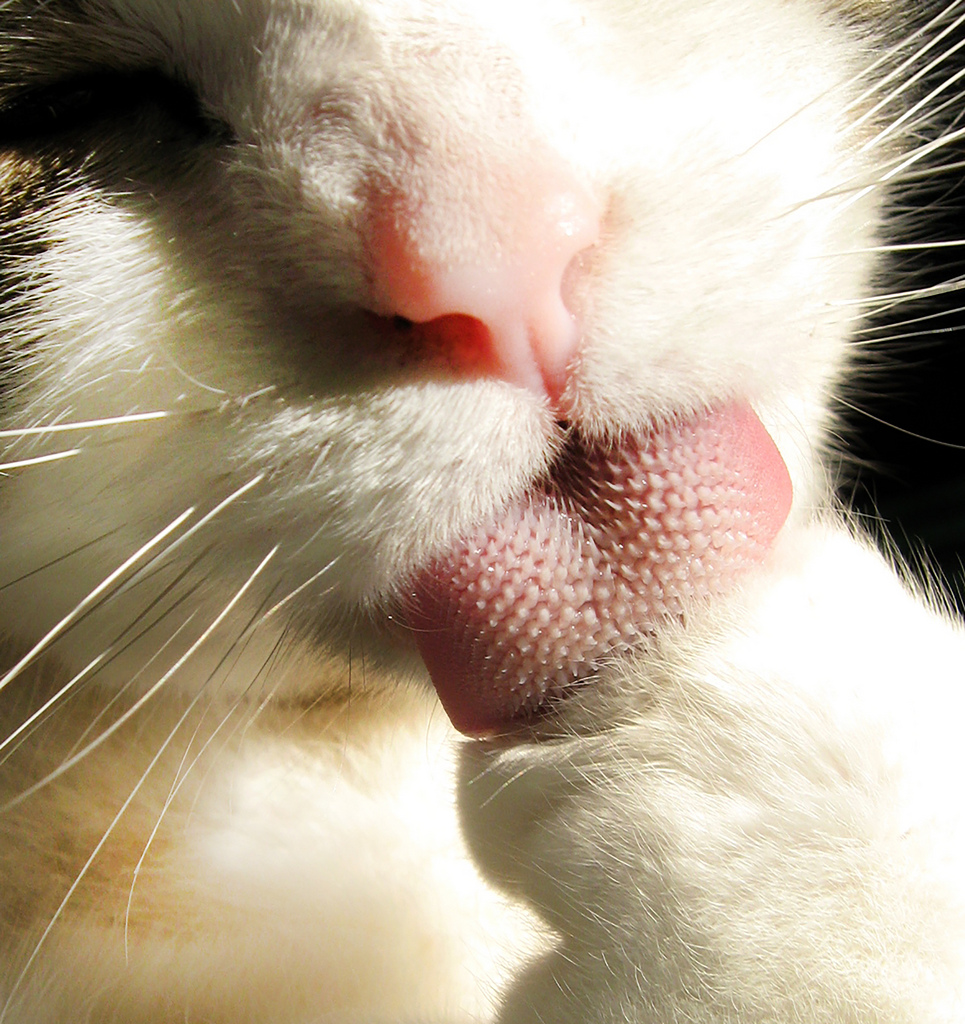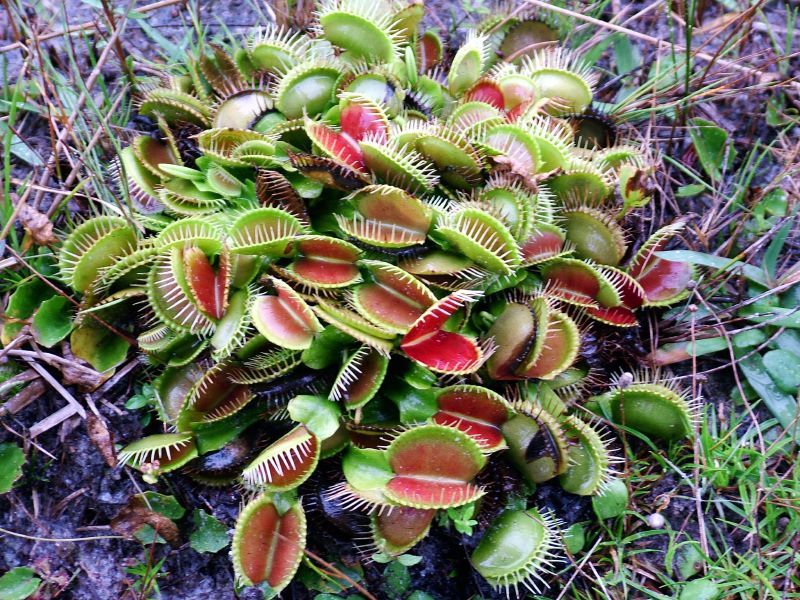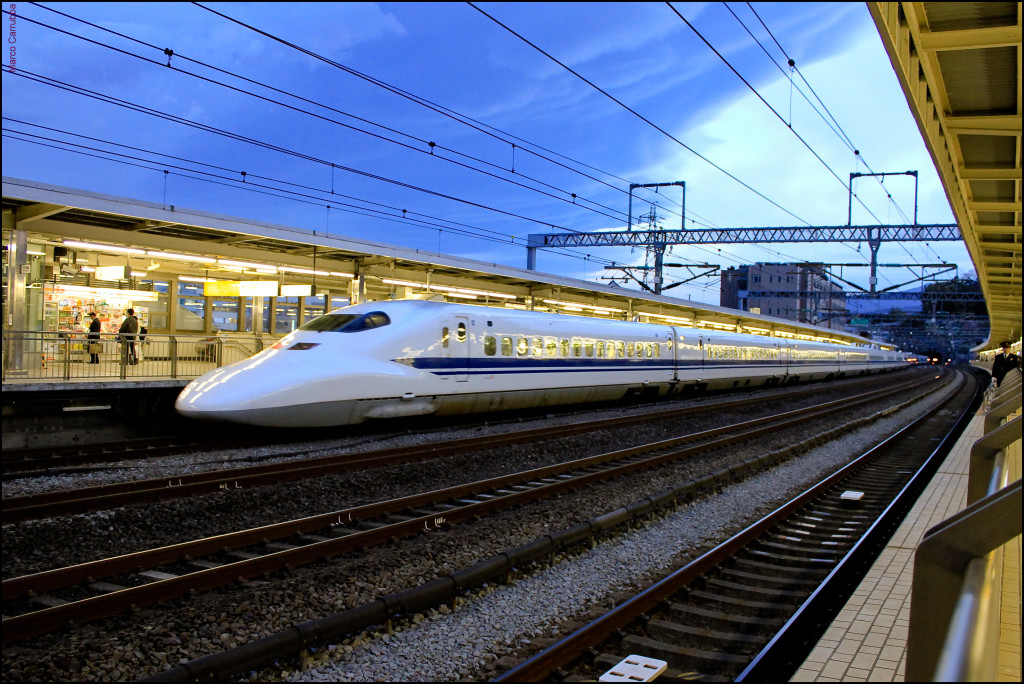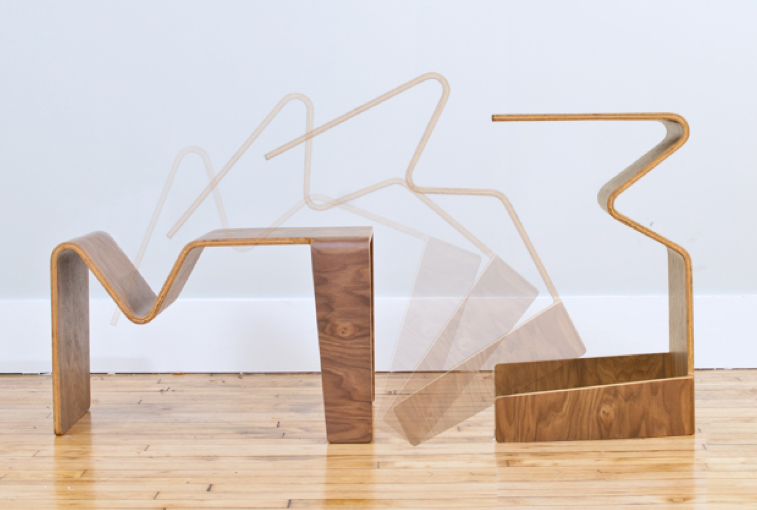Nature's Unifying Patterns
Detailed descriptions and examplesNature uses shape to determine functionality.
Nature uses shape or form, rather than added material and energy, to meet functional requirements. This allows the organism to accomplish what it needs to do using a minimum of resources. Forms can be found in the shape of a beetle’s back and in the multi-layer structure of a tropical rainforest. If we notice a form in nature, with very rare exceptions, there’s almost always a functional reason behind that form.
Biology Examples
Cat’s tongue

A cat’s tongue has small barbs, called papillae, that make it easier for the feline to remove meat from the bones and tissues of the small prey they capture. The tongue is also used for effective grooming, which is actually a survival skill. After a cat devours its prey, it grooms itself in order to remove any lingering evidence of the kill, so as not to attract larger predators to the scent. Whether a cat is cleaning prey or cleaning itself, the tongue is able to do most of the work due to its barbed form.
Fish fins
The tail fins of fish have different shapes according to their explicit function. Tuna fish have a lunate fin, which makes them go fast. Salmon have an emarginate fin with a big surface that gives them a lot of force to jump upstream in wild rivers. Guppy fish have a big and very flexible tail fin that makes them highly maneuverable.
Venus flytrap

The carnivorous Venus flytrap is well known. Unwary insects are trapped when the plant’s cup-shaped leaf snaps shut. The mechanism, called snap instability, resembles half of a tennis ball flipping inside out. When open, the leaf sides are convex or rounded. When triggered, the opposing leaf surfaces snap inward, forming a cavity and closing up. There are small hairs or cilia along the edges of the leaves. A slight disturbance of the cilia by an insect triggers the instant collapse of the leaf. The plants are able to distinguish insects from raindrops. Also, the leaf does not close unless two adjacent cilia are moved or one cilia is touched twice, which saves the plant energy by preventing false alarms.
Design Applications
Shinkansen train

In Japan, the nose design of the high-speed Shinkansen electric train is based on the shape of the kingfisher’s beak. The shape of the train’s nose solves two problems the engineers were having—noise and energy efficiency. The older design was shaped like a blunt-nosed bullet. When the high-speed train entered a tunnel, it pushed a pressure wave ahead of it. When the train, and the wave in front of it, emerged from the tunnel, it created a loud sound like a sonic boom. The new design uses shape to meet the function of preventing a pressure wave, and it reduced drag on the train, thus saving energy.
Tre Table

Created out of one continuous sheet of wood, the Tre Table takes the notion of multifunctional furniture to a whole new level. The unique contoured shape of the design allows the table to be used as a coffee table, an end table, a computer desk, a dinner tray, or even a laptop stand and a magazine rack.
Image Credits
Cat tongue: Torbak Hopper CC-BY-ND
Fish fin shapes: NY State Dept of Environmental Conservation
Venus flytrap: David McAdoo CC-BY-NC
Shinkansen train: Marco Carrubba CC-BY-NC-ND
Tre Table: via Morfae



